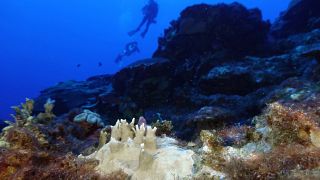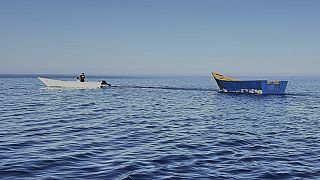Egypt
Along the Egyptian coast, a long coral reef shines with a thousand colors. Here, in the Red Sea, stretches what could become "the last coral refuge" in the world, observe researchers.
"We have strong evidence that this coral reef represents the hope for humanity to maintain a coral ecosystem," says Mahmoud Hanafy, a marine environment specialist at Suez Canal University.
Because the immense reef of the Red Sea - 5% of the world's corals - is "very tolerant to warming waters", he explains to AFP.
An asset for this coast known to divers around the world, while global warming and pollution have already taken 14% of the world's corals between 2009 and 2018.
On the Egyptian coasts, however, another danger threatens the coral reef: the human with its mass tourism, its overfishing and the concrete that it sinks.
- Dead in 2100? -
Corals cover only 0.2% of the world's seabed, but they are home to at least a quarter of the world's marine life and more than 500 million people depend on them directly, to fish, attract tourists or simply continue to live on their land, because the coral reef protects against erosion.
However, "if warming continues", the shallowest corals "are not expected to survive until the end of the century", warn the UN climate experts.
Even with global warming limited to +1.5 °C in 2100 compared to the pre-industrial era, a goal set in 2015 by the "Paris Agreement" but for the time being out of reach, 99% of corals would be unable to survive increasingly frequent marine heat waves.
This summer, one of these heat waves bleached 91% of the Great Barrier Reef of Australia, 2,300 kilometers long and classified as a World Heritage Site by UNESCO.
Bleached corals can recover if weather conditions improve, with the exception of those that have been severely bleached or that suffer from repeated heat waves.
- Memory of the Ice Age -
In Egypt, corals seem to defy this rule. The reason? "A biological memory developed over the course of evolution," explains Eslam Osman, of King Abdullah University in Saudi Arabia, on the other side of the Red Sea.
Along with other researchers, Osman determined that Red Sea coral larvae arrived from the Indian Ocean via the Gulf of Aden at the end of the last ice age 12,000 years ago.
"By arriving by the south of the Red Sea, these larvae had to cross very warm waters which acted as a filter and only let through the species that could survive up to 32 degrees," he explains to AFP.
Further south, in Sudan where the water is warmer, marine heat waves have created bleaching episodes.
In a country torn by conflicts, studies are nevertheless rare and "monitoring" the reefs is "difficult" without money, pleads the Supreme Council for the Environment and Natural Resources.
In the northern Red Sea, on the other hand, where temperatures are milder, "corals can still tolerate a rise of one, two or even three degrees," says Osman.
- Zone to defend -
Such resilience of coral reefs implies a "responsibility", warns Mahmoud Hanafy. The actors of tourism in the Red Sea - which constitute 65% of this vital sector for the Egyptian economy in the midst of a crisis - must be aware of this, he continues.
He called on the Ministry of the Environment to declare the entire 400 square kilometers of coral reef almost glued to the shore a protected area.
This would allow to reinforce "the tolerance and the resilience of the corals": "by regulating the activity of the divers and the fishermen and by making disappear the sources of pollution there".
At present, only half of the reef is protected and some dive sites exceed ten to forty times their recommended capacity, while fishing should be divided by six to be sustainable, adds this environmental specialist.
"It is essential to preserve the northern Red Sea as one of the last refuges for corals because this area could serve as a nursery for regeneration projects (of corals) in the future," said Eslam Osman.
In Egypt as in Saudi Arabia, Mr. Osman noted the damage of coastal construction: "sewage" and "sedimentation" of particles from construction sites suffocate the corals.










01:05
Ethiopia's mega-dam on the Nile is "now complete", Prime Minister says
01:09
Egypt: Inflation forecast to have climbed further in May
01:05
U.K-Egypt: Mother of jailed activist hospitalised amid hunger strike
01:37
World likely to breach temperature records, exceed 1.5°C limit by 2030
02:20
Tarik Saleh returns to Cannes with explosive political thriller ‘Eagles of the Republic’
Go to video
El-Sissi and Aoun urge Israel to end strikes on Lebanon